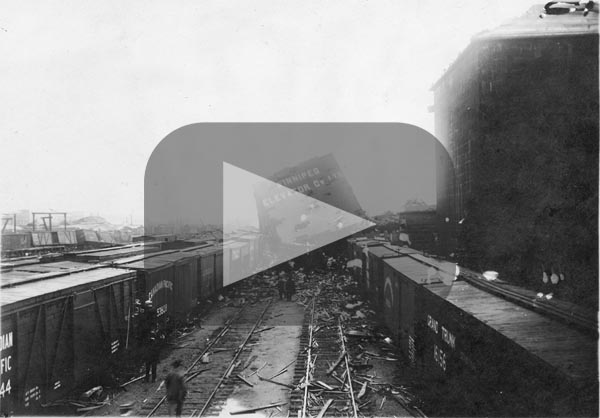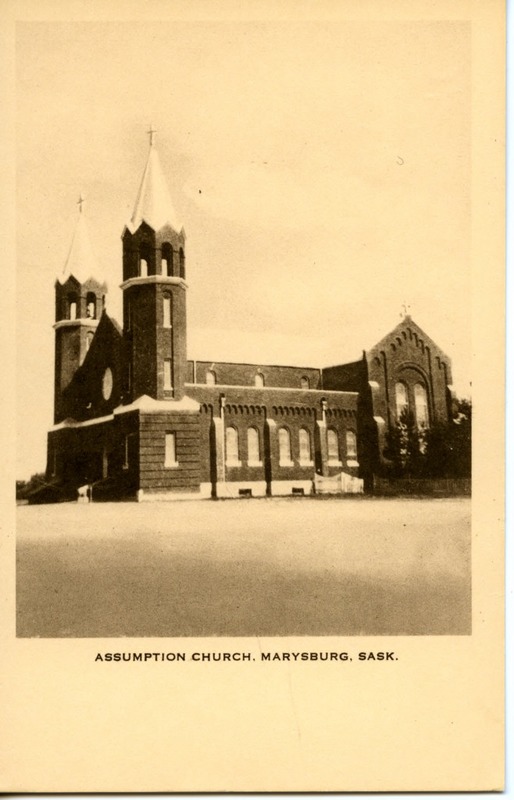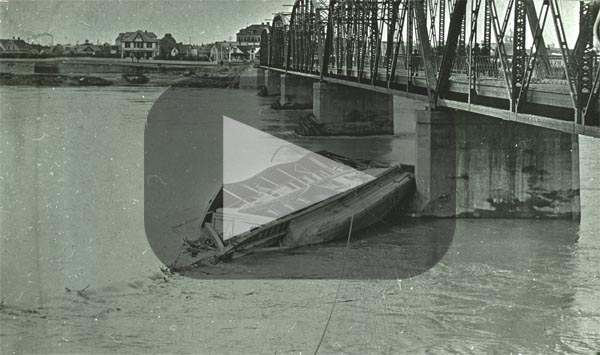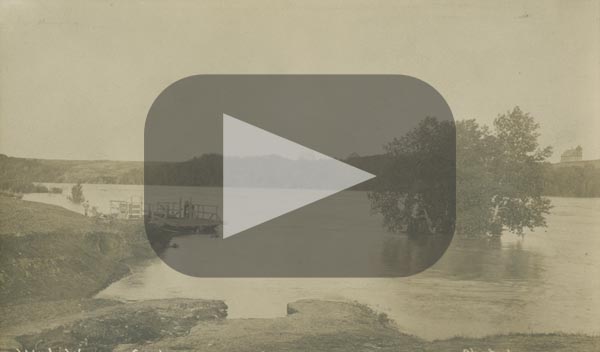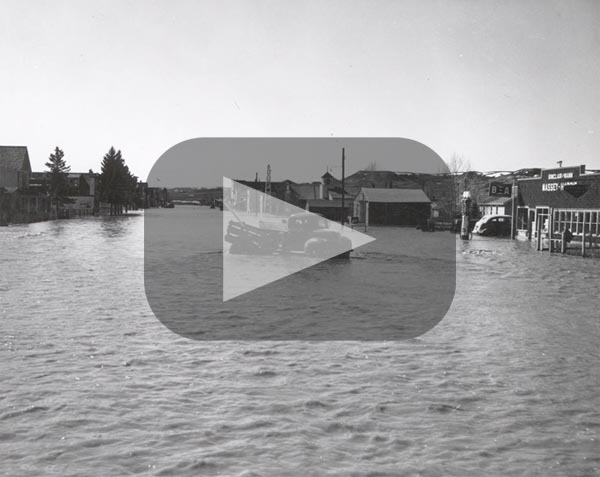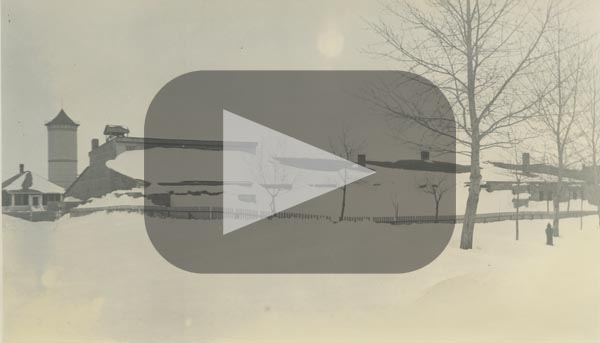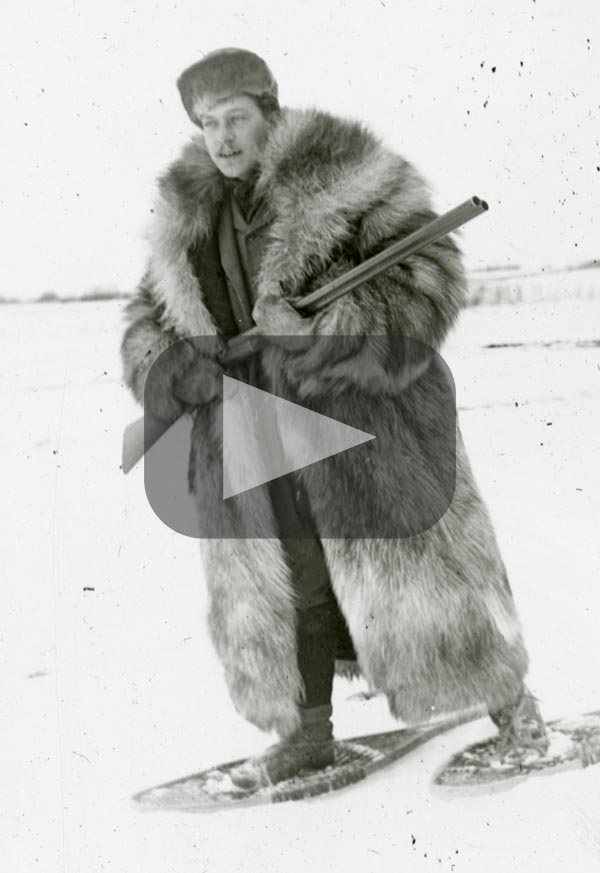Due to performance issues and aging infrastructure SaskHistoryOnline will be migrated to a new system soon. Some disruptions may occur and the website will look different, but the material will remain. We apologize for any inconvenience.
Wild Weather in Saskatchewan
By Beth Richert
STORMS
Epic storms . . . storms that keep you awake at night, eyes glued to the window . . . storms that leave the neighbourhood around obscured under a pile of snow . . . that make you realize why the ancients believed the gods lived in the skies and were vengeful . . . Those sorts of storms are well known to Saskatchewan. The flat prairie, here, and low expanse of sky makes them all the more impressive. Postcards, photographs and paintings from our province show that storms – both wondrous and terrifying – have been capturing our attention and imagination throughout our province’s history.
After the slideshow starts you can press the "pause" button to stop the slideshow.
TORNADOES / CYCLONES
Regina Cyclone:
On the 1st of July, 1912, Regina's local newspaper, the Morning Leader, no doubt had a wider than usual circulation. Citizens of the unlucky city would have been keen to learn the extent of the damage caused by a cyclone that had ravaged their city on the day previous. Finding the paper on their doorstep, or picking it up from the local store, they would not have been consoled to read the opening headlines. The first headline exclaimed: "31 Known Dead [later revised to 28]; Over 100 Hurt in Disaster"; and the second: "Regina Mourns for scores killed or hurt as tornado cuts through heart of city; casualties and loss are terribly heavy". Feverishly devouring the gloomy words of the articles that followed these headings, the Regina natives would have learnt of the large number of their cherished buildings affected, as well as the names of citizens dead and injured. Drawings and photos published in this paper and those published on the days to follow revealed the scale of the tragedy. An especially vivid drawing published in the Morning Leader of the following day (Tuesday, July 2nd) showed a collapsed Winnipeg Elevator Company grain elevator.
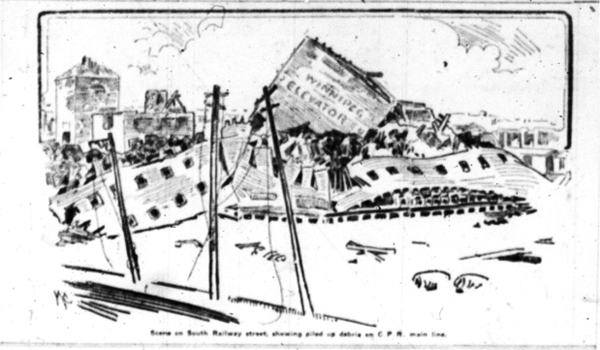
Drawing from The Morning Leader; Vol. IX, No.157, Tuesday, July 2, 1912
After the slideshow starts you can press the "pause" button to stop the slideshow.
The Regina Cyclone was certainly the strongest tornado to strike this province, yet it was far from the only one. In 1919, for instance, a cyclone destroyed the Roman Catholic Church in Marysburg, Saskatchewan; the historic structure shown in the postcard below was built to replace the former, now demolished, church. The only remnant to survive the cyclone and be reused in the new church was a 400 pound bell:
On August 9, 1944, the town of Kamsack in eastern Saskatchewan suffered damage from a tornado which claimed some 400 homes and 100 businesses and left three dead and many injured. 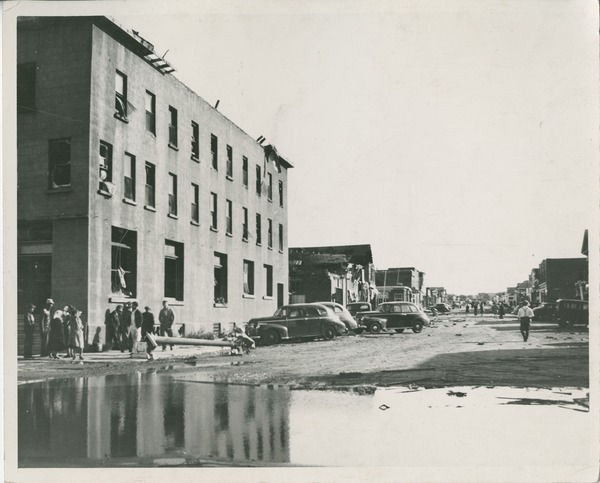
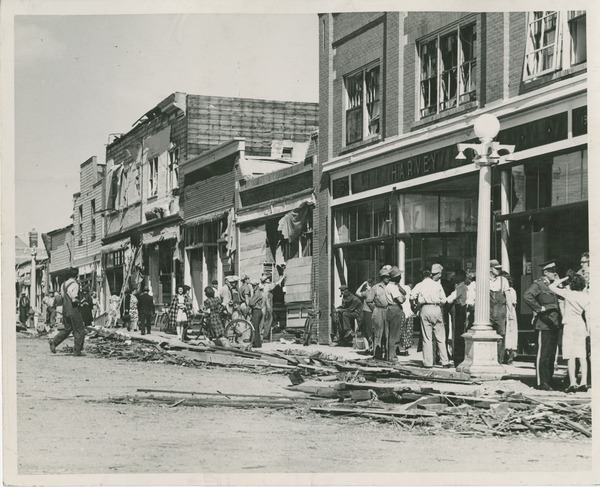
FLOODS
The high river waters that brought devastation to parts of Alberta this year, and left Saskatonians and other Saskatchewan provincials anxiously eyeing the rising river water levels, are not in any way unique to our provincial history. The summer of 1908, for instance, saw record high water levels in the South Saskatchewan as it flowed through Saskatoon. A postcard written from Saskatoon that year shows the image of a house with its first floor almost completely submerged underwater. The sender of the postcard identified the house: "...This is the house at the foot of the C.N.R bridge in Nutana [Saskatoon] ”.
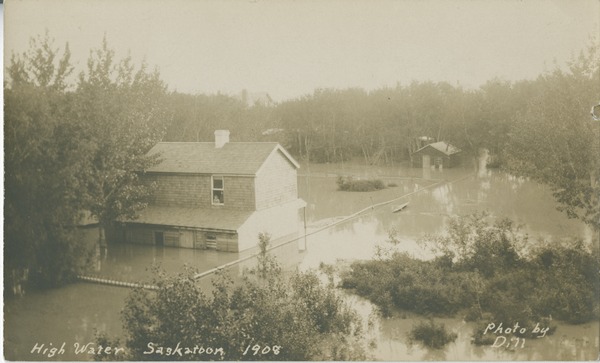
It was during this same flood that the infamous crash of the S.S. City of Medicine Hat stern-wheeler took place (June 7th, 1908). This postcard, that vividly shows the high water and distressed boat, has written on the back: "This shows the water at its highest if you compare this with the others I sent you will see how high the water came up. After the boat struck it turned over against the pier...” .
After the slideshow starts you can press the "pause" button to stop the slideshow.
The Daily Phoenix of June 10th, 1908 recorded : “ . . . The river is looking really majestic in its wild and powerful sweep, but as a C.N.R. man remarked last night, it is serious when it strikes home, and it hit the C.N.R. in a way that might easily have been very serious.” Further down under the sub-heading “Anxious about the bridges,” the paper records that men had been working constantly at the north end of the traffic bridge to shore it up and reduce potential damage.
After the slideshow starts you can press the "pause" button to stop the slideshow.
The following images represent the Eastend flood that devastated the town in April of 1952. The flood occurred over two days, April 15th, and 16th, 1952, and was caused by a ruptured dam. The flood waters were so severe that buildings appeared to be sitting in a pool of water and makeshift boats were created to commute around town.
After the slideshow starts you can press the "pause" button to stop the slideshow.
SNOW
I come from a land that is harsh and unforgiving
Winter snows can kill you
And the summer burn you dry
When a change in the weather
Makes a difference to your living
You keep one eye on the banker
And Another on the sky
Connie Kaldor - “Harsh and Unforgiving”
In the winter of 1947 blizzards raged for ten days and left thick, heavy, and sometimes impenetrable, snow drifts in their wake. According to the Atlas of Saskatchewan, “A dairy farmer in Moose Jaw had to cut a hole in his barn roof so that he could enter it to milk his cows”. Images from a major snow storm in Saskatoon, circa 1920, show that this inconvenience to the dairy farmer was not one unknown to other Saskatchewanians throughout our history. Being ‘snowed in’ is a familiar experience here on the prairies.
After the slideshow starts you can press the "pause" button to stop the slideshow.
There are, however, also many fond memories of being outside in the snow - the cold snowy winters being something clearly demarcating Prairieness:
After the slideshow starts you can press the "pause" button to stop the slideshow.
PERSONAL STORIES – THOSE AFFECTED BY SASK WEATHER
Winter in Saskatchewan can be threatening. However, it was much more perilous to the early settlers of our province who were often ill-equipped to deal with the cold. In 1906-1907 an especially harsh winter became legendary for its ferocity. The special report of Veterinary Director General and Live Stock Commissioner, J.G. Rutherford, entitled “The Cattle Trade of Western Canada” (1909), states, under ‘Winter Losses”: “The winter of 1886-7 was almost fatal to the [cattle] industry, being unequalled in severity by any season, either before or after, until the memorable year of 1906-7 when approximately fifty per cent of the cattle on the range were lost”. Cattle weren’t the only casualties of such frigid winters though. Humans also suffered.
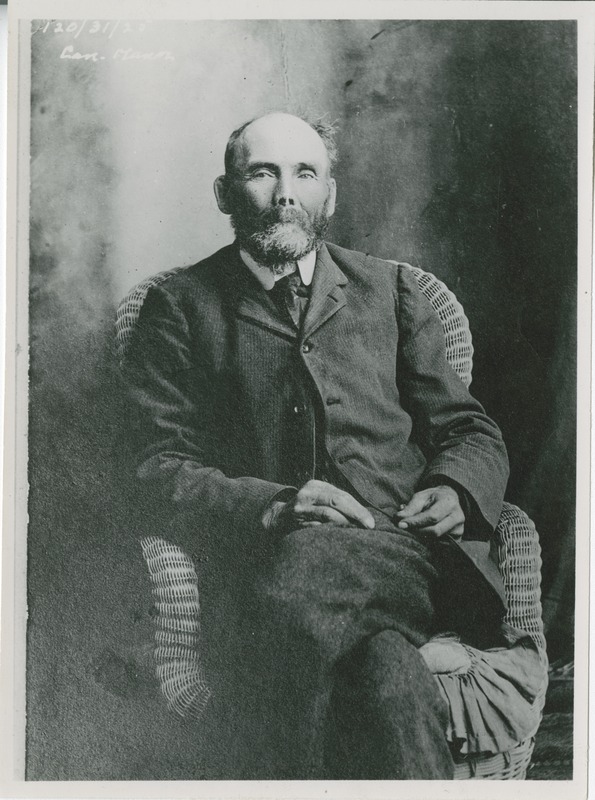
Abraham Evans of Wawota; spcoll:2910; MSS C555/2/14_17_no24; postcard; Cannington Manor
This photograph was made into a postcard. On the back is written: "Abraham Evans of Wawota - Lost in blizzard March 8, 1892. Wandered from Tuesday to following Monday. Feet and part of nose amputated. Mrs. Ramage, a neighbor, who had asked for a lift home from Moosomin perished in the storm... "
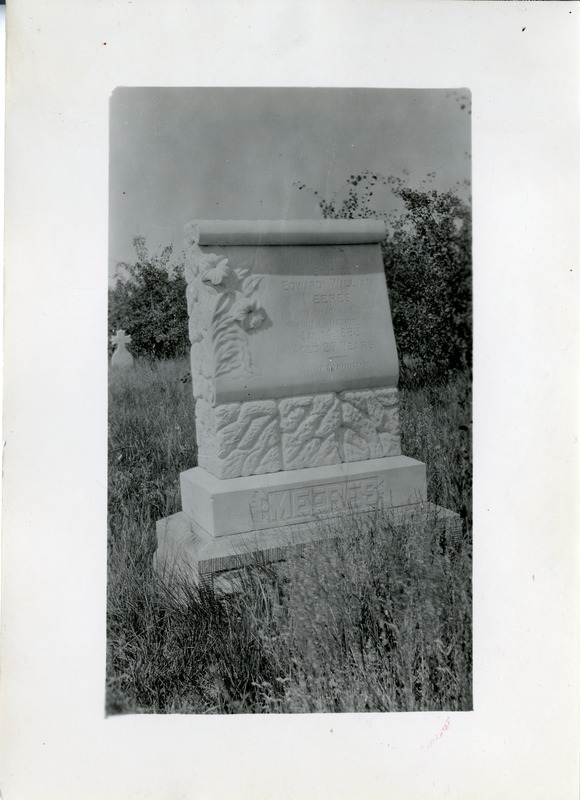
Tomb Stone of Edward Meeres in the Old Timers cemetery near the Saskatoon Exhibition grounds (1927); spcoll:2206
This tomb stone was erected for Edward Meers who, it records, lost his life on the Prairie during a blizzard on January 14th 1888. He was 27 years old.


